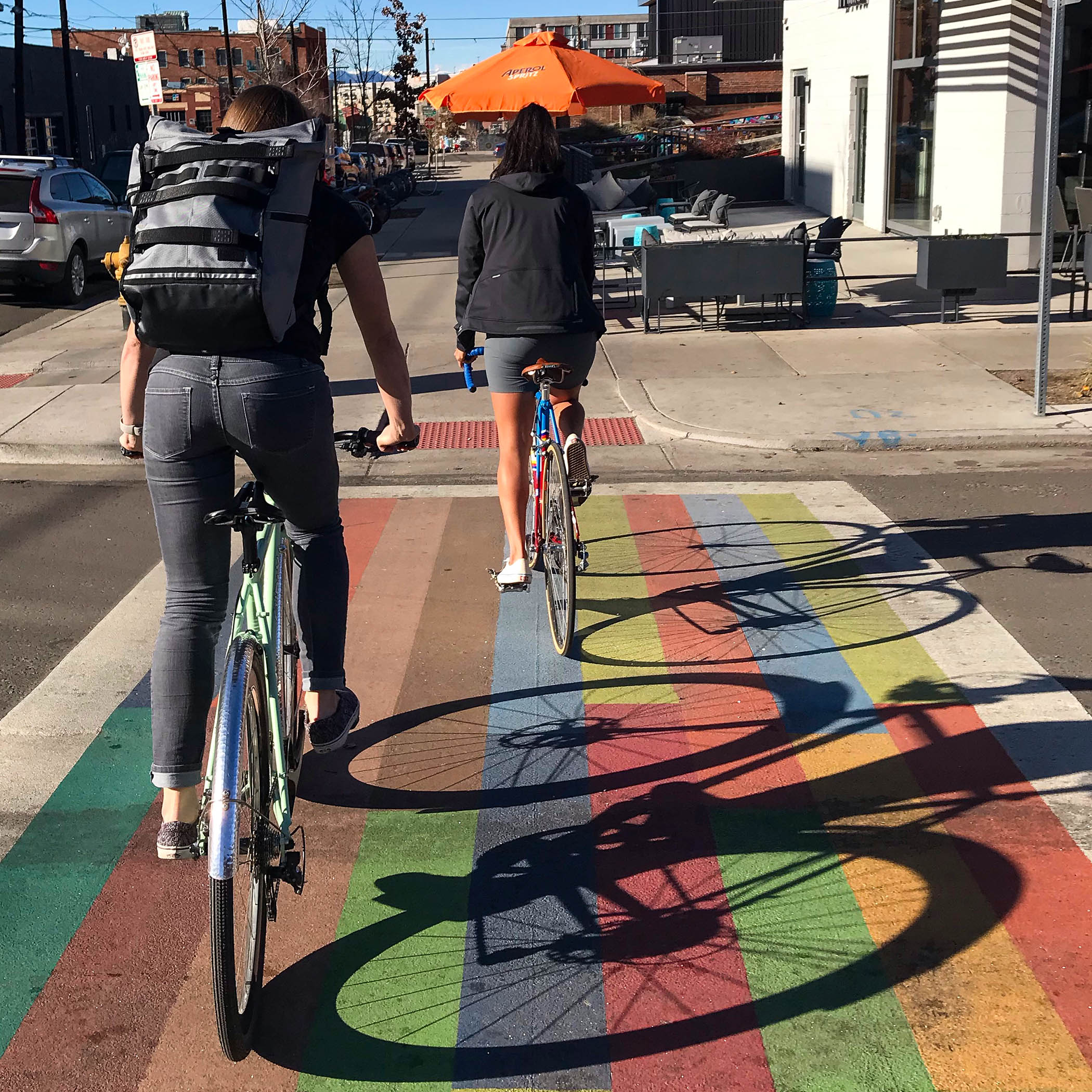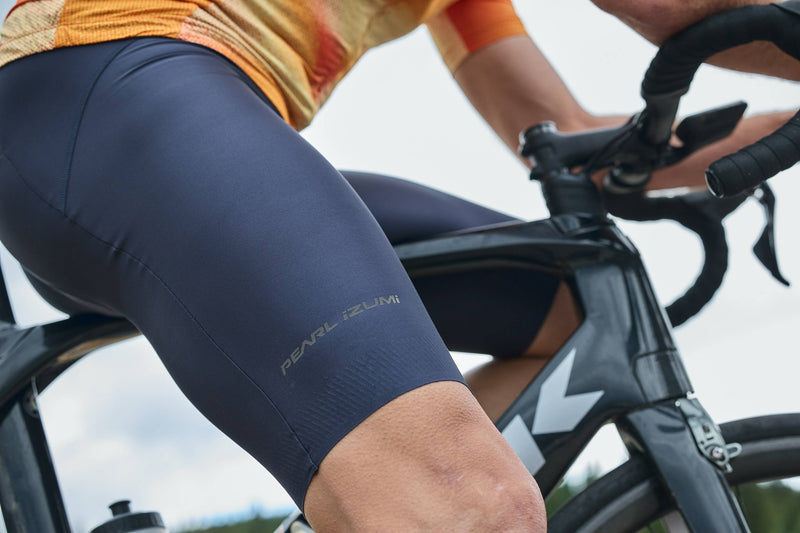First, it’s easy to make the argument that the right bike for your commute is the one you have, which may be true. This piece examines the key considerations and options available to help you choose the perfect bike for your needs. After all, it’s possible that investing a little to get exactly what you want could be the perfect motivation to keep you committed to riding instead of driving.

All bikes have trade-offs. The key is to find the right combination of attributes for your specific needs, which will depend on trip length, parking situation, surfaces you plan to ride on, and what type of clothing you want to wear. One need is universal: a reliable solution for daily transportation that helps you arrive on-time and looking your best. Fear of a flat tire can keep you from riding in if you’re crunched for time. Let’s explore some of the primary considerations, in order of importance:
Parking: No other factor will affect your decision more than where you can park your bike while at work. Best case, you’ll have secure indoor parking available. This allows for a lot of flexibility and makes it much more practical to use a bike you already own, but most of us don’t have that luxury. Should you need to park outside, security and weather need to be considered.
You’ll need to make a judgment about how secure your parking options are, though the reality is that bike theft can happen anywhere. Upping your lock game to discourage criminals is a good idea, but you may be surprised at how much a good lock (or two) adds to the weight of your bags. The alternative is to make your bike less attractive to thieves, which can be done in one of two ways: either buy an inexpensive bike or make a nicer bike look unremarkable. One of the coolest bikes I’ve ever seen belonged to a shop mechanic in my home town. At first glance, it was a dull-grey department store bike, but careful inspection revealed high-end parts with logos removed and a repainted frame. All the performance, none of the flash.
Parking outside also exposes your bike to the sun and rain, which can wreak havoc on seats, tires, and drivetrain. In this situation, it makes sense to simplify the mechanical parts where practical to improve reliability. You may also want to spend a little less even if your outdoor spot is secure because your bike will not last as long.
Bike Weight: People probably put too much emphasis on weight when talking about bikes, though for commuters it can be a really practical issue. Carrying a bike up or down a flight (or more) of stairs can rule out some otherwise attractive options, like electric-assisted e-bikes, which often weigh as much as 50 pounds. Do you need to be able to lift your bike onto a city bus rack? Depending on your situation, the weight will either be a primary decision driver or just a nice-to-have benefit to make your ride more enjoyable.
Speed/Distance: These two factors of your commute are really one and the same. How much time do you have to get to work and how long do you want to pedal? Even if you don’t want to go particularly fast, keep in mind that a faster bike is easier to pedal at any speed. For trips that are less than a couple miles, you can ride just about anything happily, but if you need to cover twenty miles each way you’re going to want something on the faster end of the spectrum. This usually involves a tradeoff, as faster bikes tend to have narrower tires and a less casual position, which might require bike-specific apparel to be comfortable.
Capacity/Adaptability: What do you need to bring to work and how do you want to carry it? Short trips with a modest amount of gear are easily accommodated with a backpack. However, longer trips and/or more gear really benefit from a bike mounted carrying solution, such as a handlebar bag or rear rack and paniers. This takes the weight (and sweat build up) off of your back for more comfort. Not all bikes can accommodate racks, so if that’s important make sure to look for that capability specifically.
Other General Recommendations: Three other things should be considered no matter what type of bike you’re looking for, and they all relate to reliably arriving at your destination: Flat resistant tires, disc brakes, and fenders.
All tires can flat, but some have more built-in protection from thorns, nails, and glass. Models like the Schwalbe Marathon series come in sizes for just about any type of bike. I’ve used one pair for two years without a single flat tire. They have a combination of materials under the tread to stop objects from puncturing your innertubes. This added protection will add weight, but it’s almost always worth it for city riding.
Keep in mind that you can flat two different ways; from a sharp object or riding with too little tire pressure, causing the rim to bottom out over a bump. You shouldn’t have to pump your tires more than a couple times per week, but it’s always good to give them a squeeze before you head out to make sure they’re not too low, or you risk a flat.
Disc brakes add reliable stopping power and also keep your bike cleaner than a standard rim-brake. When riding a rim-brake bike, you may notice grey streaks on your bike after riding through a rainstorm. That’s caused by aluminum dust wearing off your rim while braking with wet pads, and it can get on hands and clothing, especially if you need to carry the bike.
One of the biggest benefits of having a dedicated city bike is being able to keep a set of fenders installed at all times, which will help you arrive at your destination with clean clothes. Even if you live in Southern California, where it rains only a few times per year, you’ll still benefit from the protection fenders provide while crossing drainage areas or sprinkler runoff. If you’re riding in a rain storm, it’s amazing how much drier you’ll be overall, because fenders block the wheel spray from your legs and backside.
Ok, now let’s weigh the benefits and limitations of seven different general bike categories, all of which could be perfect for your needs:
ROAD BIKES

Road: These bikes are both fast and light, but they tend to be less versatile and may not easily accommodate fenders. Also, narrower tires need to be more closely monitored to make sure they have enough air pressure to prevent flats.
Consider if:
You have a long commute on relatively good pavement and are likely to wear cycling clothing on your ride.
MOUNTAIN BIKES

Mountain: No other category is as diverse as mountain bikes and some will not be practical, no matter what type of commute you have. However, mountain bikes without suspension, or only front suspension, can make a solid choice if your route isn’t too long, covers a variety of surfaces or features steep hills. Switching to a smoother tire without knobs will make you significantly faster and easier.
Consider if: You like the body position and control provided by a mountain bike, and want to link together a route consisting of pavement, dirt or other surfaces.
TOWNIE BIKES

Townie: These bikes are purpose-built for city riding, often coming with fenders, racks, and other details appreciated by bike commuters. One big advantage they offer is a more upright body position that makes wearing street clothes more practical.
Consider if: You have a moderate to shorter commute and don’t want to change clothing.
FIXIE BIKES

Fixie: A “fixie” is a fixed gear bike, meaning that they cannot coast like a typical bike; whenever the rear wheel is spinning, the pedals are turning. You also have only one gear, so to go faster you need to pedal faster (sometimes, a lot faster). Bike couriers popularized these bikes because they appreciated simplicity and reliability, and mainstream bike culture has adopted this style of bike as the stereotypical urban bike.
Consider if: You have a shorter, relatively flat commute and need to park outside.
CROSS/GRAVEL BIKES

Cross/Gravel: Blending many of the best attributes of road and mountain bikes, a cyclocross-style bike can make an excellent commuter. They’re light, relatively fast, and have larger tires for a smoother ride. Be sure to check if the bike is designed for fenders or allow for fenders to be attached.
Consider if: You have a longer commute, want to ride over a variety of surfaces, and need to carry up and down stairs.
E-BIKES

E-Bike: Electric assist bikes can come in many different flavors, but they all share some common attributes. Most notably, the ability to augment your pedaling effort, allowing you to ride significantly faster with less effort – and sweat. Two major downsides are cost and weight; you won’t want to lug one of these up and down stairs daily.
Consider if: Your commute is longer and you’re committed to riding every day, or you if you want to wear street clothes instead of traditional cycling clothing.
CRUISER BIKES

Cruiser: Riding a coaster-brake beach cruiser will almost always put a smile on your face, as long as you’re not in a hurry, riding for more than 30 minutes, going up a long hill, or lugging it up a flight of stairs. Plus, no fancy clothing required.
Consider if: You have a flat, short commute, easy ground level parking, and only need a backpack’s worth of gear.





Comments